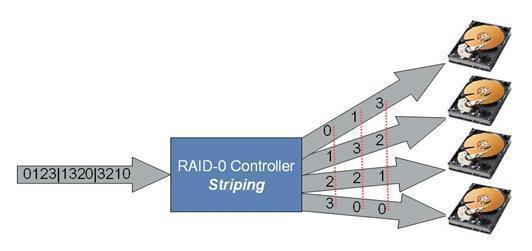Striping
Striping is the automated process of writing data across multiple drives simulteneously. Striping is used to increase the performance of disk reads.
When using striping, if you write a 5GB file across 5 drives, 1GB of data is written to each drive. Parallel reading of data from multiple disks can have a significant positive impact on performance, because the physical disk drive is most often the performance bottleneck.
Striping is used in RAID Level 0.
If one drive in a striped set fails, all of the data in the stripe set is lost. The data must be restored from backup. Because of this, striping is often combined with the use of parity (RAID 5) or mirroring (RAID 0+1).
Performance Problems Cause by Striping
Striping, when combined with parity, can have a negative performance impact on write operations. This is because some of the data used to calculate parity may be stored on the disk already. This means that the process to write to the array is:
- Read the existing data
- Calculate the parity
- Write the new parity
- Write the new data


Comments - No Responses to “Striping”
Sorry but comments are closed at this time.